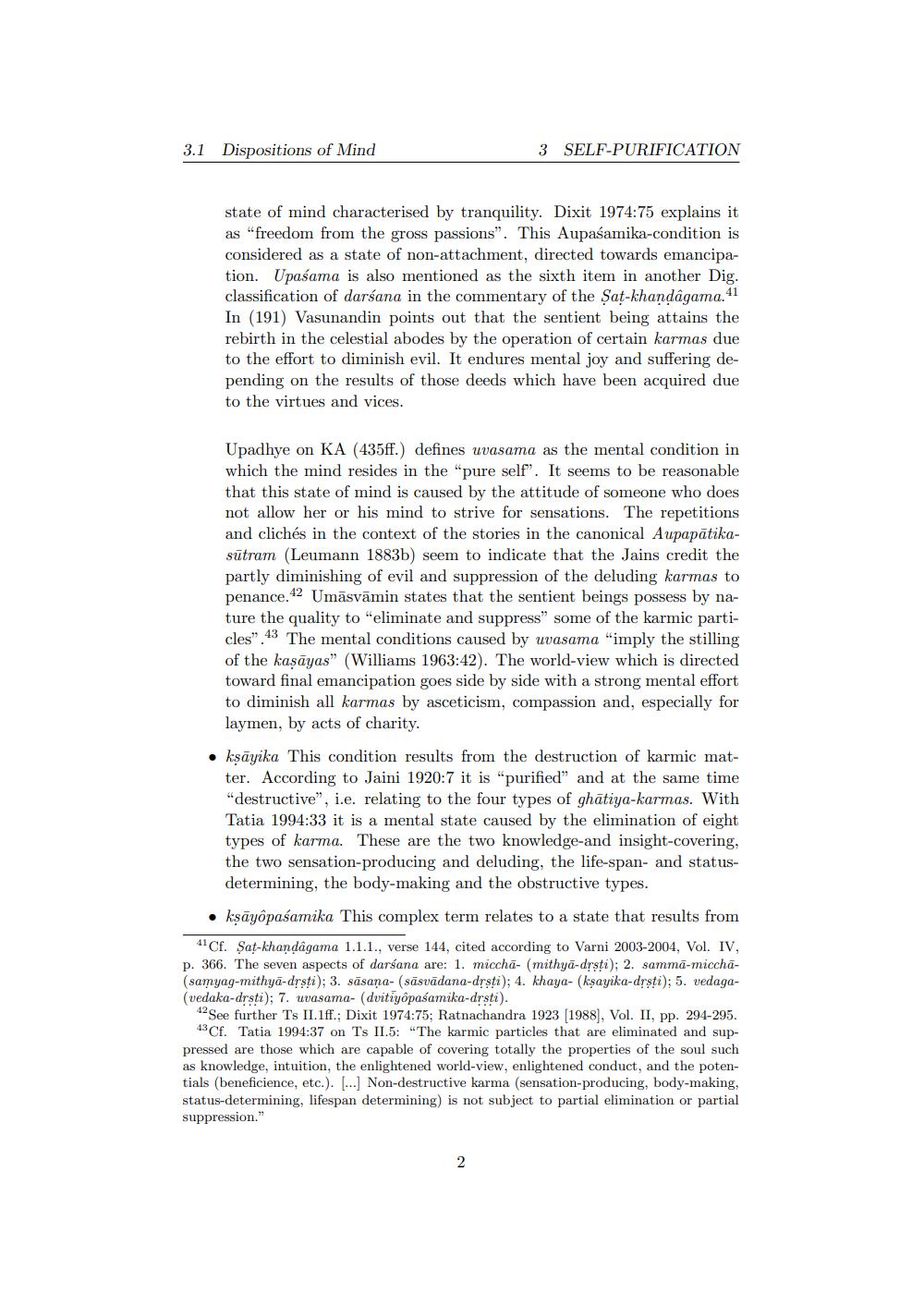________________
3.1 Dispositions of Mind
3 SELF-PURIFICATION
state of mind characterised by tranquility. Dixit 1974:75 explains it as "freedom from the gross passions". This Aupaśamika-condition is considered as a state of non-attachment, directed towards emancipation. Upasama is also mentioned as the sixth item in another Dig. classification of darśana in the commentary of the Sat-khandagama.41 In (191) Vasunandin points out that the sentient being attains the rebirth in the celestial abodes by the operation of certain karmas due to the effort to diminish evil. It endures mental joy and suffering depending on the results of those deeds which have been acquired due to the virtues and vices.
Upadhye on KA (435ff.) defines uvasama as the mental condition in which the mind resides in the "pure self". It seems to be reasonable that this state of mind is caused by the attitude of someone who does not allow her or his mind to strive for sensations. The repetitions and clichés in the context of the stories in the canonical Aupapātikasūtram (Leumann 1883b) seem to indicate that the Jains credit the partly diminishing of evil and suppression of the deluding karmas to penance.42 Umāsvāmin states that the sentient beings possess by nature the quality to "eliminate and suppress” some of the karmic particles". 43 The mental conditions caused by uvasama "imply the stilling of the kasāyas" (Williams 1963:42). The world-view which is directed toward final emancipation goes side by side with a strong mental effort to diminish all karmas by asceticism, compassion and, especially for laymen, by acts of charity. kṣāyika This condition results from the destruction of karmic matter. According to Jaini 1920:7 it is "purified" and at the same time "destructive", i.e. relating to the four types of ghātiya-karmas. With Tatia 1994:33 it is a mental state caused by the elimination of eight types of karma. These are the two knowledge and insight-covering, the two sensation-producing and deluding, the life-span- and statusdetermining, the body-making and the obstructive types.
• ksāyôpaśamika This complex term relates to a state that results from
41 Cf. Sat-khandagama 1.1.1., verse 144, cited according to Varni 2003-2004, Vol. IV, p. 366. The seven aspects of darsana are: 1. miccha- (mithya-drsti); 2. samma-miccha(samyag-mithya-drsti); 3. sāsaņa- (sāsvādana-drsti); 4. khaya-(kşayika-drsti); 5. vedaga(vedaka-drsti); 7. uvasama- (dvitiyopasamika-drsti).
42 See further Ts II.1ff.; Dixit 1974:75; Ratnachandra 1923 (1988), Vol. II, pp. 294-295.
43 Cf. Tatia 1994:37 on Ts II.5: "The karmic particles that are eliminated and suppressed are those which are capable of covering totally the properties of the soul such as knowledge, intuition, the enlightened world-view, enlightened conduct, and the potentials (beneficience, etc.). [...] Non-destructive karma (sensation-producing, body-making, status-determining, lifespan determining) is not subject to partial elimination or partial suppression."




